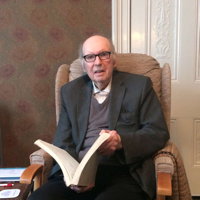- Supraphon Music Publishing
- Peter von Winter
- avant-garde
- Howard Beach
- Hollywood
- Michelangeli
- Nicolai Ghiaurov
- Vittorio Monti

Thoroughly Enjoyable and Witty
GERALD FENECH listens to Poulenc, on Bramwell Tovey's last recording
'Splendidly performed and sumptuously recorded ...'
First things first. When this album was recorded in March 2022 by Bramwell Tovey and the BBC Concert Orchestra, little did one expect that this would be Tovey's last foray in the recording studio. Sadly, that's what came about because, a few weeks later, this hardworking and esteemed conductor closed his eyes to this world forever. So, from the bottom of my heart, I am dedicating this humble essay to his memory. May it be worthy of his interpretations.
Now on to Francis Poulenc (1899-1963), who today is considered as one of France's great composers of the twentieth century, but things were initially not ideal. Indeed, the young Francis was encouraged by his parents to study business, so the young man came late to music without much formal education. His career took off when he scored a success with a full-length ballet, Les biches, written on a commission by Diaghilev. This piece was premiered in Monte Carlo in 1924. A young audience cherished the unsophisticated freshness and charm of the work, and in the wake of this positive reception, Poulenc started to receive many commissions. One of these came from the BBC in 1947, and Poulenc duly obliged with the Sinfonietta, which was first performed in a broadcast concert in London on 24 October 1948, where the Philharmonia Orchestra was conducted by Roger Desormiere.
Poulenc's only symphonic work, the Sinfonietta is in four movements, and music-wise the piece is light and full of dance rhythms, at times satirical. The first movement begins forte but is contrasted with melodic elements. The second of scherzo character is reminiscent of the last movement of Les biches and has brief misterioso moments. The third section is gentle with an expansive melodic theme, while the finale recalls Haydn's last movements with folksy themes that scurry along to a breathless conclusion.
Listen — Poulenc: Finale (Sinfonietta)
(CHSA 5260 track 4, 0:00-0:57) ℗ 2022 Chandos Records Ltd :
The ballet Les Animaux modèles is based on fables by Jean de la Fontaine, who also inspired other composers such as Gounod, Offenbach and Saint-Saëns. Poulenc started work on his ballet in 1940, completing a piano score in September 1941 and orchestrating it between October 1941 and June 1942. He wrote his own scenario, making the various animals more human-like than usual. The commentator Gerald Hugon observes:
Different musical styles brought together in delightful fashion – passionate grand piano writing set against the bad boy's waltz-java in 'Le Lion amoureux', the verve of the Offenbachian can-can in 'L'homme entre deux âges et ses maîtresses', Moussorgskyan turns of phrase in 'La Mort et le Bûcheron' and a deliberate borrowing of Paganini's Caprice No 24 in 'Les Deux Coqs'.
Hugon comments that all these influences are absorbed by Poulenc and turned into his own style. At the time of the premiere, which took place at the Palais Garnier on 8 August 1942, the composer's friend and colleague Arthur Honneger wrote that 'the influences that have worked upon him – Chabrier – Satie – Stravinsky are now completely assimilated in Poulenc'. The choreographer and principal dancer Serge Lifar had a tough task to present the ballet, as Paris was then under Nazi occupation, but the many German officers in the audience failed to spot the composer's defiant incorporation of the anti-German song 'Vous n'aurex pas l'Alsace et la Lorraine' in his score. Indeed, Poulenc had the last laugh after all.
The action is set in rural Burgundy during the eighteenth century, and is split in eight scenes as follows:
1 Dawn
2 The Bear and the Traveller
3 The Ant and the Grasshopper
4 The Lion in Love
5 The Man with two Mistresses
6 Death and the Woodcutter
7 The Battle of the Two Roosters
8 Lunchtime
Les Animaux modèles has all the ingredients of a masterpiece: highly colourful and descriptive music, innovative harmonies, captivating rhythms and, above all, a punchy allegorical sense, in this case aimed at the plight of wartime France.
Listen — Poulenc: Finale (Les Animaux modèles)
(CHSA 5260 track 14, 0:00-0:56) ℗ 2022 Chandos Records Ltd :
This programme also includes three other short orchestral works: La Baigneuse de Tronville and Discours du général from Le Mariés de la Tour Eiffel and Pastourelle from L'Éventail de Jeanne. A trio of delightful miniatures full of deft orchestral touches and effective little tunes that display Poulenc's innate ability to compose charming music even when using reduced orchestral forces.
Listen — Poulenc: Pastourelle (L'Éventail de Jeanne)
(CHSA 5260 track 7, 1:18-1:53) ℗ 2022 Chandos Records Ltd :
Splendidly performed and sumptuously recorded, this last fling of Tovey's baton is a thoroughly enjoyable and witty voyage into the realms of one of France's most imaginative and original composers of the twentieth century. Do take the trip; you won't regret it.
Copyright © 13 November 2022
Gerald Fenech,
Gzira, Malta

CD INFORMATION: POULENC - BRAMWELL TOVEY




